Jianguo Jiang
SpeechForensics: Audio-Visual Speech Representation Learning for Face Forgery Detection
Aug 13, 2025Abstract:Detection of face forgery videos remains a formidable challenge in the field of digital forensics, especially the generalization to unseen datasets and common perturbations. In this paper, we tackle this issue by leveraging the synergy between audio and visual speech elements, embarking on a novel approach through audio-visual speech representation learning. Our work is motivated by the finding that audio signals, enriched with speech content, can provide precise information effectively reflecting facial movements. To this end, we first learn precise audio-visual speech representations on real videos via a self-supervised masked prediction task, which encodes both local and global semantic information simultaneously. Then, the derived model is directly transferred to the forgery detection task. Extensive experiments demonstrate that our method outperforms the state-of-the-art methods in terms of cross-dataset generalization and robustness, without the participation of any fake video in model training. Code is available at https://github.com/Eleven4AI/SpeechForensics.
* Accepted by NeurIPS 2024
GLIMMER: Incorporating Graph and Lexical Features in Unsupervised Multi-Document Summarization
Aug 19, 2024



Abstract:Pre-trained language models are increasingly being used in multi-document summarization tasks. However, these models need large-scale corpora for pre-training and are domain-dependent. Other non-neural unsupervised summarization approaches mostly rely on key sentence extraction, which can lead to information loss. To address these challenges, we propose a lightweight yet effective unsupervised approach called GLIMMER: a Graph and LexIcal features based unsupervised Multi-docuMEnt summaRization approach. It first constructs a sentence graph from the source documents, then automatically identifies semantic clusters by mining low-level features from raw texts, thereby improving intra-cluster correlation and the fluency of generated sentences. Finally, it summarizes clusters into natural sentences. Experiments conducted on Multi-News, Multi-XScience and DUC-2004 demonstrate that our approach outperforms existing unsupervised approaches. Furthermore, it surpasses state-of-the-art pre-trained multi-document summarization models (e.g. PEGASUS and PRIMERA) under zero-shot settings in terms of ROUGE scores. Additionally, human evaluations indicate that summaries generated by GLIMMER achieve high readability and informativeness scores. Our code is available at https://github.com/Oswald1997/GLIMMER.
Are we really making much progress? Revisiting, benchmarking, and refining heterogeneous graph neural networks
Dec 30, 2021

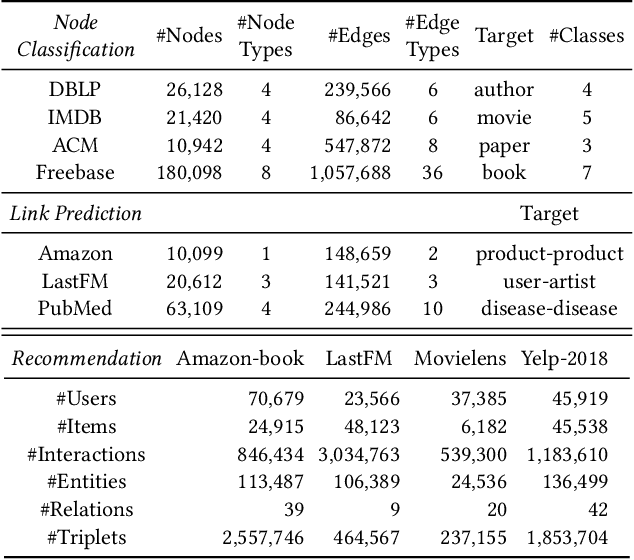
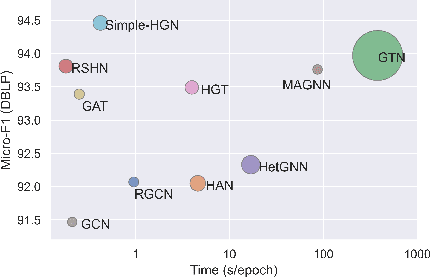
Abstract:Heterogeneous graph neural networks (HGNNs) have been blossoming in recent years, but the unique data processing and evaluation setups used by each work obstruct a full understanding of their advancements. In this work, we present a systematical reproduction of 12 recent HGNNs by using their official codes, datasets, settings, and hyperparameters, revealing surprising findings about the progress of HGNNs. We find that the simple homogeneous GNNs, e.g., GCN and GAT, are largely underestimated due to improper settings. GAT with proper inputs can generally match or outperform all existing HGNNs across various scenarios. To facilitate robust and reproducible HGNN research, we construct the Heterogeneous Graph Benchmark (HGB), consisting of 11 diverse datasets with three tasks. HGB standardizes the process of heterogeneous graph data splits, feature processing, and performance evaluation. Finally, we introduce a simple but very strong baseline Simple-HGN--which significantly outperforms all previous models on HGB--to accelerate the advancement of HGNNs in the future.
Sequence-based Person Attribute Recognition with Joint CTC-Attention Model
Nov 27, 2018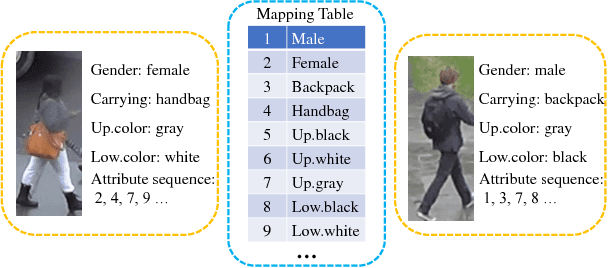
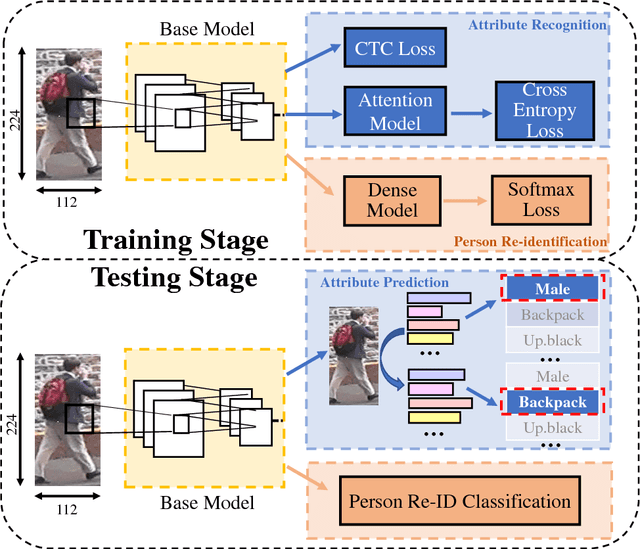
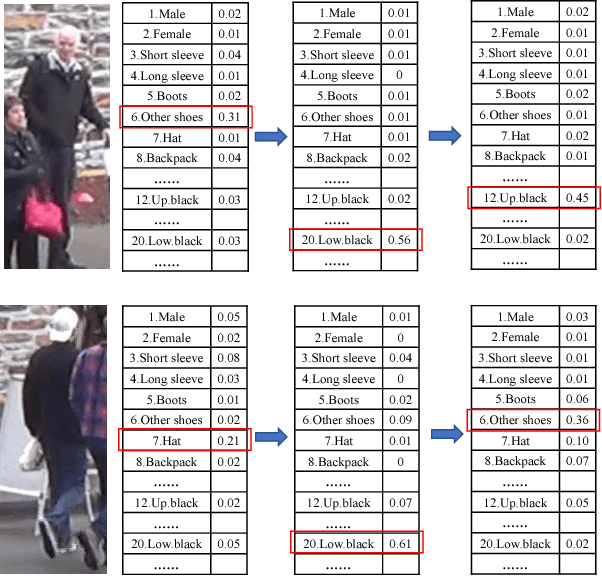
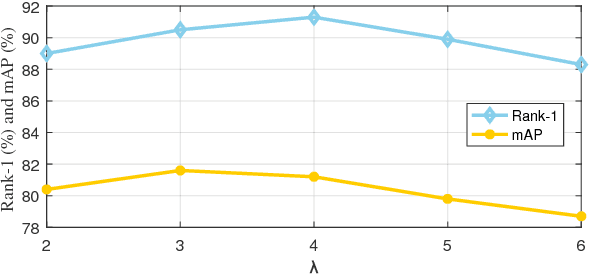
Abstract:Attribute recognition has become crucial because of its wide applications in many computer vision tasks, such as person re-identification. Like many object recognition problems, variations in viewpoints, illumination, and recognition at far distance, all make this task challenging. In this work, we propose a joint CTC-Attention model (JCM), which maps attribute labels into sequences to learn the semantic relationship among attributes. Besides, this network uses neural network to encode images into sequences, and employs connectionist temporal classification (CTC) loss to train the network with the aim of improving the encoding performance of the network. At the same time, it adopts the attention model to decode the sequences, which can realize aligning the sequences and better learning the semantic information from attributes. Extensive experiments on three public datasets, i.e., Market-1501 attribute dataset, Duke attribute dataset and PETA dataset, demonstrate the effectiveness of the proposed method.
Neural Person Search Machines
Jul 21, 2017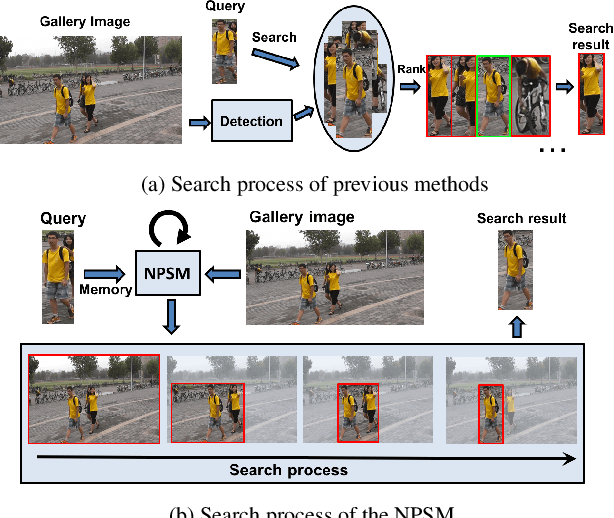
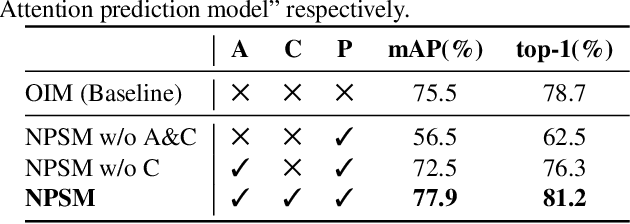
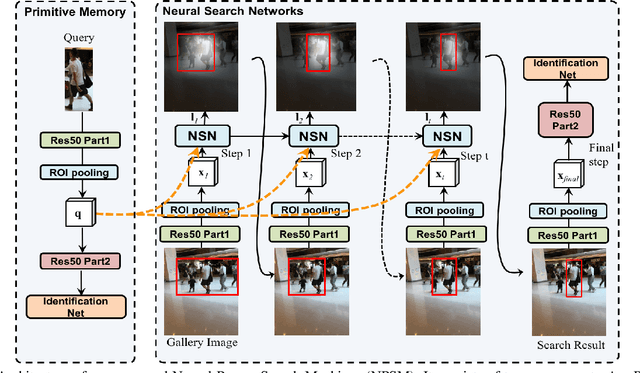
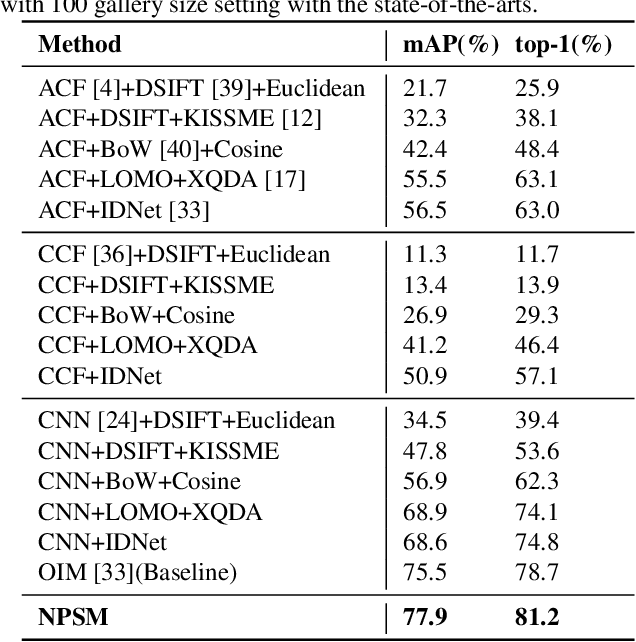
Abstract:We investigate the problem of person search in the wild in this work. Instead of comparing the query against all candidate regions generated in a query-blind manner, we propose to recursively shrink the search area from the whole image till achieving precise localization of the target person, by fully exploiting information from the query and contextual cues in every recursive search step. We develop the Neural Person Search Machines (NPSM) to implement such recursive localization for person search. Benefiting from its neural search mechanism, NPSM is able to selectively shrink its focus from a loose region to a tighter one containing the target automatically. In this process, NPSM employs an internal primitive memory component to memorize the query representation which modulates the attention and augments its robustness to other distracting regions. Evaluations on two benchmark datasets, CUHK-SYSU Person Search dataset and PRW dataset, have demonstrated that our method can outperform current state-of-the-arts in both mAP and top-1 evaluation protocols.
Video-based Person Re-identification with Accumulative Motion Context
Jun 13, 2017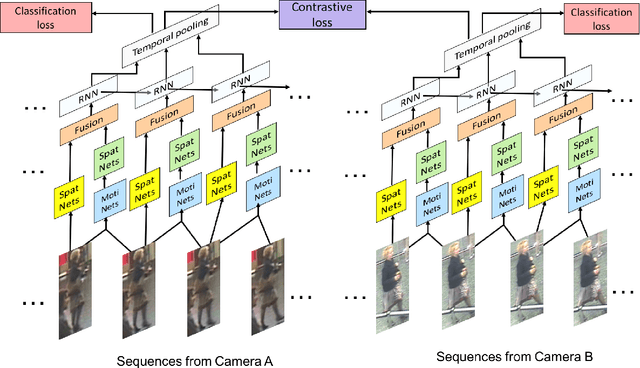
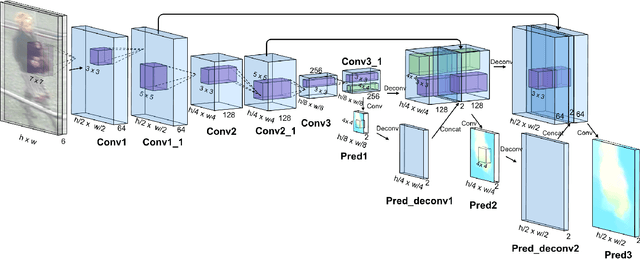
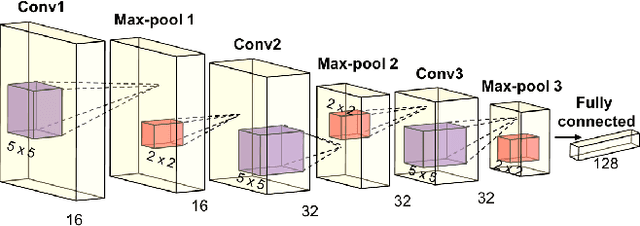
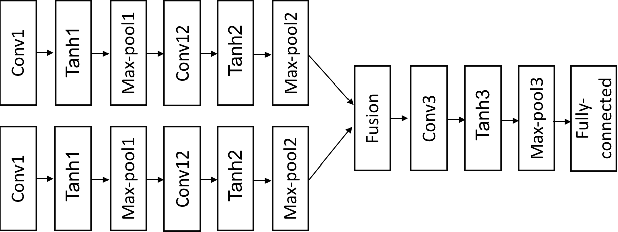
Abstract:Video based person re-identification plays a central role in realistic security and video surveillance. In this paper we propose a novel Accumulative Motion Context (AMOC) network for addressing this important problem, which effectively exploits the long-range motion context for robustly identifying the same person under challenging conditions. Given a video sequence of the same or different persons, the proposed AMOC network jointly learns appearance representation and motion context from a collection of adjacent frames using a two-stream convolutional architecture. Then AMOC accumulates clues from motion context by recurrent aggregation, allowing effective information flow among adjacent frames and capturing dynamic gist of the persons. The architecture of AMOC is end-to-end trainable and thus motion context can be adapted to complement appearance clues under unfavorable conditions (e.g. occlusions). Extensive experiments are conduced on three public benchmark datasets, i.e., the iLIDS-VID, PRID-2011 and MARS datasets, to investigate the performance of AMOC. The experimental results demonstrate that the proposed AMOC network outperforms state-of-the-arts for video-based re-identification significantly and confirm the advantage of exploiting long-range motion context for video based person re-identification, validating our motivation evidently.
End-to-End Comparative Attention Networks for Person Re-identification
Apr 28, 2017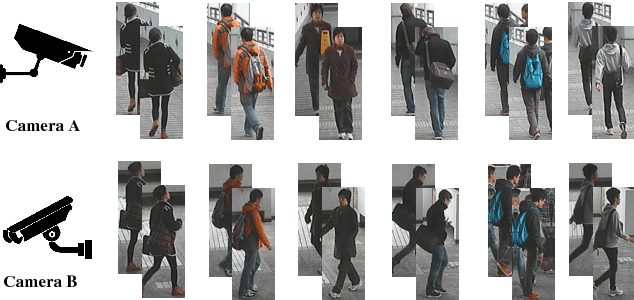
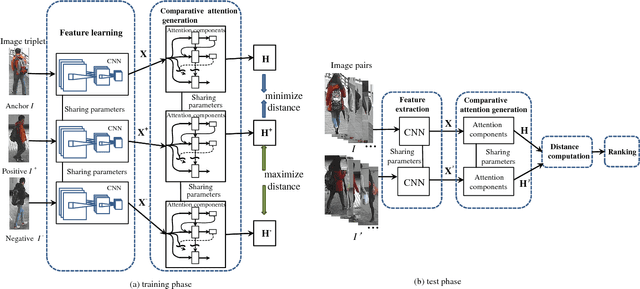
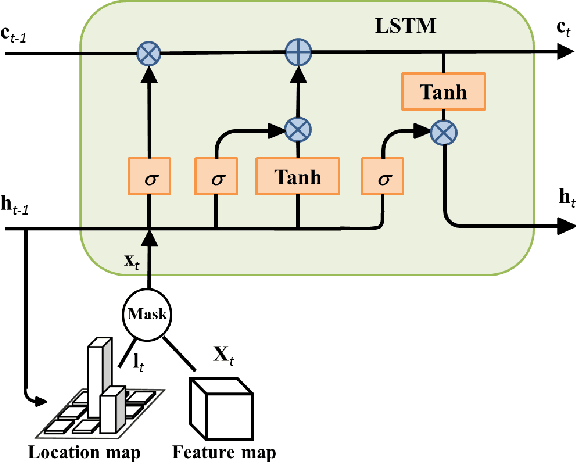
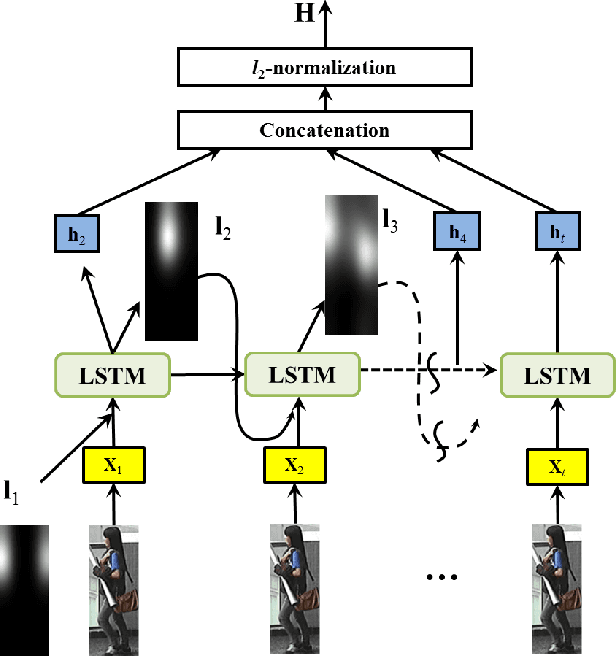
Abstract:Person re-identification across disjoint camera views has been widely applied in video surveillance yet it is still a challenging problem. One of the major challenges lies in the lack of spatial and temporal cues, which makes it difficult to deal with large variations of lighting conditions, viewing angles, body poses and occlusions. Recently, several deep learning based person re-identification approaches have been proposed and achieved remarkable performance. However, most of those approaches extract discriminative features from the whole frame at one glimpse without differentiating various parts of the persons to identify. It is essentially important to examine multiple highly discriminative local regions of the person images in details through multiple glimpses for dealing with the large appearance variance. In this paper, we propose a new soft attention based model, i.e., the end to-end Comparative Attention Network (CAN), specifically tailored for the task of person re-identification. The end-to-end CAN learns to selectively focus on parts of pairs of person images after taking a few glimpses of them and adaptively comparing their appearance. The CAN model is able to learn which parts of images are relevant for discerning persons and automatically integrates information from different parts to determine whether a pair of images belongs to the same person. In other words, our proposed CAN model simulates the human perception process to verify whether two images are from the same person. Extensive experiments on three benchmark person re-identification datasets, including CUHK01, CHUHK03 and Market-1501, clearly demonstrate that our proposed end-to-end CAN for person re-identification outperforms well established baselines significantly and offer new state-of-the-art performance.
 Add to Chrome
Add to Chrome Add to Firefox
Add to Firefox Add to Edge
Add to Edge